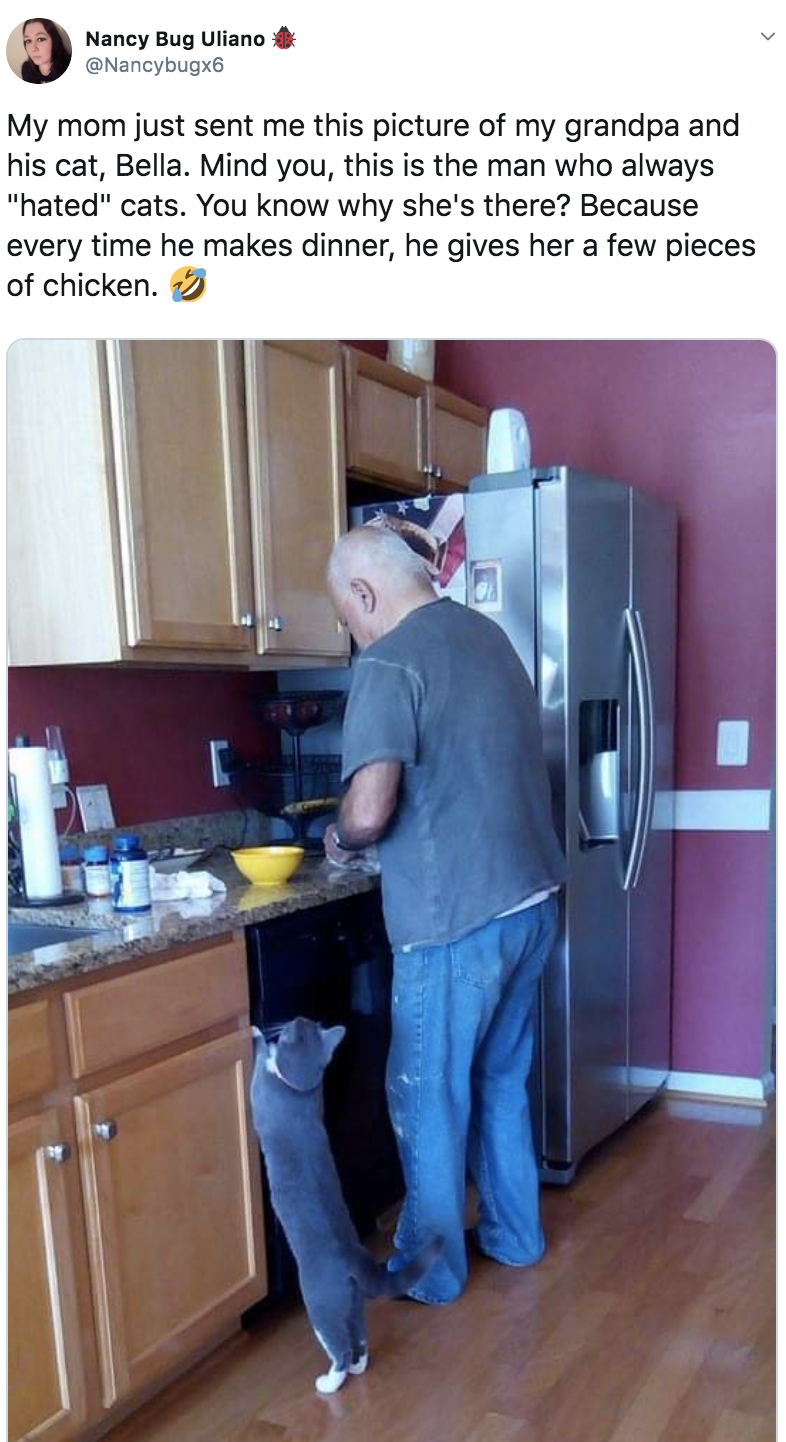Animal cruelty is a pervasive issue that often manifests in numerous, insidious forms, particularly within familial structures where deep emotional bonds ordinarily exist. When it is discovered that a beloved family member—such as a grandfather—may be mistreating or abusing pets, the situation becomes fraught with complex emotional and ethical dilemmas. The question arises: Can one intervene effectively to halt such behavior without fracturing familial ties? This inquiry necessitates a multifaceted exploration of the problem and potential solutions.
Initially, it is vital to understand the psychology underlying pet ownership and animal care. Pets are often perceived as companions that inherently enhance the quality of life for their owners. However, some individuals view animals merely as possessions, failing to recognize their sentient nature and the ethical imperatives that accompany their care. In instances where a grandfather neglects, abuses, or even trivializes the suffering of animals, this perspective is particularly problematic. Understanding this distortion of perception can be the first step toward addressing the issue at hand.
One pivotal aspect to consider is the nature of the alleged abuse. Is it overt and physical, such as hitting or severely neglecting the animal’s needs? Or is it more insidious—covert psychological mistreatment that prevents the animal from experiencing a fulfilling life? Each type of abuse necessitates a different approach to intervention. For example, overt abuse may warrant immediate reporting to authorities, while psychological neglect may require a more nuanced and empathetic discussion.
Addressing this matter requires acute observation and tactful analysis. To ascertain the level of mistreatment, one should carefully document specific instances of harmful behavior. Note the frequency, context, and reactions of the pets involved. Does the grandfather express annoyance when an animal begs for attention, or does he diminish their needs? Such observations can create a foundational understanding of the dynamics at play and equip one to engage in meaningful dialogue.
Once a comprehensive understanding is achieved, consider broaching the topic with the grandfather. This approach necessitates a delicate balance of honesty and respect. Rather than adopting an accusatory tone, frame the conversation around concern for the animal’s well-being. Highlight the attributes of companionship and loyalty that pets provide, hoping to rekindle a sense of empathy within the grandfather. “I’ve noticed that Fluffy seems anxious when left alone,” or “I worry that Max isn’t getting enough social interaction,” can be gentle yet pointed ways to open a dialogue about the issue.
The tone and timing of this conversation are equally crucial. Choose a moment when the grandfather is relaxed and receptive. During this interaction, listen actively to his perspective, validating his feelings while guiding the discussion toward a more compassionate stance on pet care. For some, this may require a reframing of long-held beliefs about the role of animals in their lives—transforming views from those of mere property to that of family members with distinct emotional needs.
If resistance persists, it might be beneficial to incorporate educational resources into the dialogue. Share articles, videos, or anecdotes about the therapeutic benefits of nurturing relationships between pets and humans. Highlight how such bonds have been shown through various studies to improve mental health, reduce stress, and promote happiness. Often, confronting ignorance with knowledge can facilitate transformation.
Encouraging involvement with the animals can also be advantageous. Propose engaging in shared activities such as walks, play sessions, or training classes. This hands-on approach not only enriches the lives of the pets but can engender a newfound appreciation for their complexity and sensitivity in the grandfather. The simple act of fostering joy through interaction may shift the grandfather’s perception and behavior dramatically.
Moreover, consider the influence of accountability. Engaging other family members can amplify the message and create a collective understanding of the importance of humane treatment. By fostering a supportive network that prioritizes the health and happiness of the animals, there is greater potential to encourage meaningful change in the grandfather’s behavior.
Despite best efforts, some cases may require more drastic measures. If abuse persists unabated, it may become necessary to report the situation to local authorities or animal protection organizations. It is crucial to recognize that the welfare of the animal must take precedence. While the goal is to reform behavior through dialogue and education, there exists a threshold beyond which action must be taken to ensure the safety and dignity of the pets involved.
Ultimately, confronting the issue of animal abuse within a family setting is fraught with intricacies. It requires a thoughtful balance of compassion, patience, and persistence. Shifting perspectives may take time, with various methods necessitating trial and error. However, as advocates for animal welfare, one must remain resolute in the commitment to safeguard the well-being of vulnerable creatures. Each attempt, regardless of its outcome, is a step toward fostering a more humane understanding of our cohabitants on this planet—shaping a world where empathy prevails over neglect and abuse.






